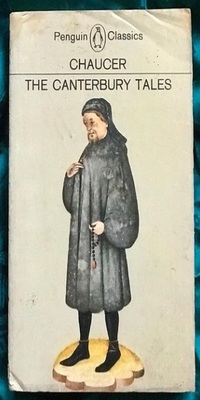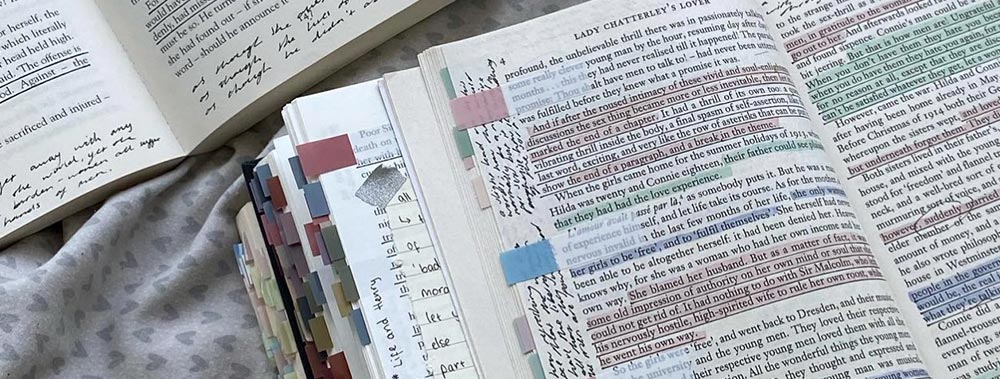The Canterbury Tales Prologue: Summary, Plot, Characters, Literary Analysis & More
The Canterbury Tales is Geoffrey Chaucer’s Middle English masterpiece, written in the late 14th century. Focusing on the prologue, it introduces us to a diverse group of 29 pilgrims on a religious journey to Canterbury Cathedral.
Chaucer’s vivid descriptions reveal their social class, table manners, and personalities. This prologue serves as a social commentary, satirizing medieval society while showcasing Chaucer’s narrative style and keen observations.
It sets the stage for the ensuing tales, where these characters draw lots to tell their stories, making it a pivotal component of English literature and a window into the Middle Ages.

Through this engaging prologue, Chaucer provides a fascinating glimpse into medieval society while laying the foundation for the captivating tales that follow.
Table of Contents
Summary The Plot Characters Key Themes Genres Language used Literary devices Summing upThe Plot
In “The Canterbury Tales” by Geoffrey Chaucer, the plot centers around a group of pilgrims who converge at the Tabard Inn in Southwark during March.
They embark on a religious pilgrimage to the shrine of Thomas Becket in Canterbury. To pass the time, they agree to tell stories, and the one with the best tale will win a free meal upon their return.
The General Prologue sets the stage, describing the pilgrims, including a knight, a prioress, a miller, a friar, and more, offering insight into their social classes, personalities, and the social fabric of the Middle Ages.
This prologue is a literary frame story, introducing the narrative structure that underpins the entire work, as the pilgrims prepare to share their tales during the journey.
Characters
The characters in “The Canterbury Tales” by Geoffrey Chaucer have a profound impact on the narrative, representing various social classes and providing a satirical commentary on medieval society. Now, let’s meet some of the key characters from the General Prologue:
The Knight
A noble and chivalrous figure, symbolizing honor and nobility.
The Prioress
A devout and elegant woman, with impeccable table manners, offering a glimpse into the religious life of the time.
The Miller
A brawny and boisterous fellow, known for his strength and crude humor, reflecting the lower classes and their earthy humor.
The Friar
A hypocritical clergyman, reveals the corruption within the Church and religious orders.
The Squire
A young and gallant son of the Knight, representing the youthful ideals of courtly love and knighthood.
These characters, among others, collectively create a rich tapestry of medieval society and lay the foundation for the tales that follow.
Key Themes
“The Canterbury Tales” by Geoffrey Chaucer explores a multitude of themes throughout its narrative, offering insights into the complexities of medieval society. In the General Prologue alone, three prominent themes emerge:
Social Class
Chaucer’s vivid descriptions of the pilgrims in the prologue reveal the stark contrasts in social class, from the noble Knight to the bawdy Miller. This theme underscores the hierarchical structure of medieval society.
Individual Perceptions
The prologue delves into the unique perspectives and personalities of each pilgrim, highlighting how individual perceptions shape their interactions and judgments. It showcases the diversity of thought and character among the group.
Table Manners
Chaucer’s keen observations of the pilgrims’ table manners serve as a humorous commentary on their behavior, revealing aspects of their character and satirizing societal norms.
These themes provide a rich backdrop for the tales that follow, offering a deeper understanding of the characters and the society they represent in “The Canterbury Tales.”
Genres in The Canterbury Tales Prologue
“The Canterbury Tales” by Geoffrey Chaucer is a literary work that deftly blends multiple genres, enriching the narrative tapestry of its General Prologue:
Frame Story
Chaucer employs the frame story genre as the pilgrims gather at the Tabard Inn in the prologue, setting the stage for the tales they will tell during their journey. This framing device provides structure and context for the individual stories.
Satire
The prologue serves as a platform for Chaucer’s satirical talents, as he humorously critiques various aspects of medieval society through the characters’ descriptions. This satirical genre adds depth and commentary to the storytelling.
Character Portraits
Within the prologue, Chaucer masterfully employs character portraits, presenting each pilgrim’s distinct personality and traits. These vivid characterizations contribute to the overall richness of the storytelling and the understanding of social dynamics.
These genres work in harmony within the prologue, laying the foundation for the diverse tales that follow in “The Canterbury Tales.”
Language used in The Canterbury Tales Prologue
Geoffrey Chaucer’s language in “The Canterbury Tales” is a testament to his literary prowess. The famous opening line, “The droghte of March hath perced to the roote,” exemplifies his skillful use of Middle English, transporting readers to the medieval era.
Chaucer’s language, rich in symbolism and imagery, sets the atmosphere for the pilgrimage and its diverse characters. It immerses readers in the sights, sounds, and emotions of the time, making the narrative a vivid and evocative portrayal of medieval England.
Literary devices in The Canterbury Tales Prologue
In the “Canterbury Tales General Prologue,” Geoffrey Chaucer employs a myriad of literary devices to craft a vivid and multifaceted narrative.
Through intricate characterization, he employs both direct and indirect characterization to paint detailed portraits of the pilgrims, revealing their personalities, social status, and idiosyncrasies.
Chaucer’s use of satire adds depth to the narrative, shedding light on societal flaws and hypocrisies. Additionally, he employs symbolism and allegory, often subtly, to convey deeper layers of meaning within the prologue’s tales.
These literary devices collectively enrich the storytelling, making the prologue a masterpiece of medieval literature.
Similes
In the prologue of “The Canterbury Tales,” Geoffrey Chaucer employs vivid similes to enhance the reader’s engagement and understanding.
For instance, when he describes the Knight, he uses the simile “As yonge sonne hath in the Ram his halfe cours yronne,” likening the Knight’s vitality to the emerging sun in Aries, vividly conveying the Knight’s youthful vigor and valor.
These similes create visual and emotional connections, allowing readers to grasp the characters’ qualities more profoundly and adding depth to the storytelling.
Metaphors
Throughout the prologue of “The Canterbury Tales,” Geoffrey Chaucer subtly weaves metaphors that contribute to the depth of his storytelling. One significant metaphor is the idea that “each pilgrim tells two tales.”
This metaphor (and the one of the first tale) serves as a literary device to symbolize the duality of human nature. By suggesting that each person possesses multiple stories, Chaucer highlights the complexity of the characters, their hidden depths, and the notion that people often present different facets of themselves to the world.
This metaphor encourages readers to look beyond the surface, inviting them to explore the richness of each pilgrim’s narrative.
Analogies
In the General Prologue of “The Canterbury Tales,” Geoffrey Chaucer employs an analogy when describing the Knight, comparing him to the “flower” of chivalry.
This analogy likens the Knight to a blooming flower, conveying the idea that he represents the pinnacle of honor, valor, and noble qualities in the realm of chivalry.
By using this analogy, Chaucer simplifies the complex concept of chivalry for readers, helping them grasp the Knight’s character and the ideal he embodies, making it a powerful literary device for conveying a nuanced idea with clarity.
Imagery
Geoffrey Chaucer skillfully employs vivid imagery to immerse readers in the narrative. When the Knight begins to tell his tale, Chaucer’s descriptive language transports readers to a battlefield, where they can almost hear the clash of armor and the thundering hooves of horses.
Similarly, when the Knight draws the straw, Chaucer’s imagery paints a scene where the pilgrims eagerly await their turns, and readers can envision the tension in the air as the lots are drawn. This imagery enhances the sensory experience, making the storytelling more engaging and evocative.
Symbolism
In the General Prologue of “The Canterbury Tales,” the presence of “all the other pilgrims” and “twenty-nine other pilgrims” symbolizes the diversity of medieval society, reflecting the broader theme of social stratification.
Additionally, the phrase “swete breeth inspired hath” symbolizes the shared aspiration for storytelling and spiritual growth on the pilgrimage, underscoring the theme of communal bonds.
Conversely, the mention of “dirty stories” hints at the contrast between the pilgrims’ outer appearances and their inner moral complexities, symbolizing the theme of hypocrisy in society. These symbols enrich the narrative by conveying deeper thematic layers.
Personification
In the opening lines of the General Prologue in “The Canterbury Tales,” Geoffrey Chaucer employs personification to breathe life into the setting and characters. He personifies the “Aprill” month as “whan Zephirus eek,” depicting it as a gentle and inspiring force.
Chaucer describes the characters with vivid personification, turning them into living, breathing individuals.
This literary device adds depth by humanizing the setting and characters, making readers more emotionally connected to the pilgrimage, the tales, and the interactions that follow, thereby enriching the storytelling experience.
Hyperbole
In the General Prologue of “The Canterbury Tales,” Chaucer uses hyperbole to create vivid character portraits. For example, the Knight is described as a “noble example,” an exaggerated depiction that emphasizes his unparalleled honor and chivalry.
This hyperbolic portrayal serves to highlight the idealized nature of the Knight’s character, contributing to the satirical tone of the narrative.
Irony
Additionally, the irony is subtly woven into the prologue, as the pilgrims, who are embarking on a tale-telling game to win a free meal, often reveal their own hypocrisies and contradictions.
This situational irony underscores the discrepancy between their stated intentions and their actual behavior, adding depth to the character portrayals and the overarching theme of societal critique.
Juxtaposition
Juxtaposition in the General Prologue of “The Canterbury Tales” is a powerful literary device used by Chaucer to highlight stark contrasts among the pilgrims.
For instance, while some pilgrims like the Knight and the Prioress exhibit noble and devout qualities, others like the Miller and the Friar are portrayed as morally questionable and hypocritical.
This juxtaposition creates thought-provoking scenarios that illuminate the diversity of human nature and social hierarchies in medieval society.
Paradox
Paradoxes also emerge as Chaucer’s narrator begins with a lighthearted tone, yet the host decides that each pilgrim’s tale should be a moral lesson.
This paradoxical blend of entertainment and moral purpose underscores the complexity of storytelling and the dual role of literature in both amusement and moral instruction.
Onomatopoeia
Chaucer uses onomatopoeic words sparingly to add an auditory dimension to the narrative. For instance, when he describes a “tavern called,” the word “called” itself mimics the sound of a sign or nameplate.
While not extensively used, these onomatopoeic elements subtly contribute to the sensory experience of the storytelling, enriching the Middle English narrative.
The Use of Dialogue
Dialogue in the General Prologue of “The Canterbury Tales” serves as a powerful tool to convey character traits and themes. Through their conversations and interactions, pilgrims reveal their personalities and social standings, contributing to the overarching theme of societal critique.
For instance, Harry Bailey’s lively dialogue as the host showcases his leadership qualities, and the interactions between characters like the hypocritical Friar and the honest Miller highlight the contrast in their moral values and class.
Word Play
Chaucer also employs wordplay techniques, such as puns and double entendre, to add humor and depth to the narrative.
These linguistic elements, often embedded in the Middle English text, demonstrate Chaucer’s mastery of language and contribute to the estate’s satire, satirizing different social classes and their contradictions.
These wordplay devices engage readers in deciphering the layered meanings within the text and add nuance to character portrayals.
Parallelism
Parallelism is evident in the General Prologue of “The Canterbury Tales” when Chaucer uses repetitive structures to create a rhythmic and balanced narrative. For example, the phrase “wel endite” is employed to describe various characters, emphasizing their eloquence and literary skill. This parallelism not only contributes to the structural cohesion of the prologue but also underscores the importance of storytelling as a common theme among the pilgrims. It highlights the diverse desires and social ranks of the characters, forming a unified yet multifaceted portrayal of medieval society.
The Canterbury Tales Prologue: FAQs
Welcome to the FAQ section for the General Prologue summary of “The Canterbury Tales” by Geoffrey Chaucer. Here, we address common queries to enhance your understanding of this literary masterpiece.
What is the summary of the prologue from The Canterbury Tales?
The summary of the General Prologue in “The Canterbury Tales” introduces readers to a diverse group of pilgrims embarking on a journey to Canterbury Cathedral. Chaucer vividly describes each pilgrim, revealing their social status, personalities, and societal roles.
What is the main point of the prologue to the Canterbury Tales?
The main point of the General Prologue is to provide readers with a comprehensive introduction to the various pilgrims and set the stage for the tales they will tell during their journey.
Is it easy to read The Canterbury Tales?
Reading “The Canterbury Tales” can be challenging for modern readers due to its Middle English language, but translated versions and resources are available to make it more accessible.
What is the significance of the phrase “march hath perced” in the General Prologue?
The phrase “march hath perced” from the General Prologue signifies the arrival of spring, symbolizing renewal and the start of the pilgrimage season. It sets the stage for the pilgrims’ journey and the themes of rebirth and transformation in the narrative.
Summing up: The Canterbury Tales Prologue: Summary, Plot & More
As you can see from this “The Canterbury Tales Prologue” summary, Geoffrey Chaucer is a literary treasure that continues to captivate readers across centuries.
Its vivid characterizations, intricate storytelling, and social commentary remain a testament to Chaucer’s brilliance.
Through this engaging prologue, Chaucer provides a fascinating glimpse into medieval society while laying the foundation for the captivating tales that follow.
Its enduring appeal lies in its timeless themes, relatable characters, and masterful use of language.
As a literary work of immense historical and cultural significance, “The Canterbury Tales” prologue continues to resonate, inviting readers to explore the complexities of human nature and society in a richly woven tapestry of storytelling.
Other Notable Works by Geoffrey Chaucer
If you are interested in “The Canterbury Tales”, you may be interested in other works by Geoffrey Chaucer including:
- “Troilus and Criseyde”: A tragic love story set during the Trojan War, showcasing Chaucer’s poetic skills and narrative prowess.
- “The Parliament of Fowls”: An allegorical dream-vision poem that explores themes of love, nature, and the hierarchy of birds.
- “The Book of the Duchess”: A poem that elegantly conveys themes of grief and mourning through a dream narrative.
- “The Legend of Good Women”: A collection of stories about virtuous women from history and mythology, reflecting Chaucer’s interest in feminine character.
- “The House of Fame”: An allegorical work that delves into the nature of fame and reputation.
These works provide further insight into Chaucer’s literary genius and his contributions to Middle English literature.







